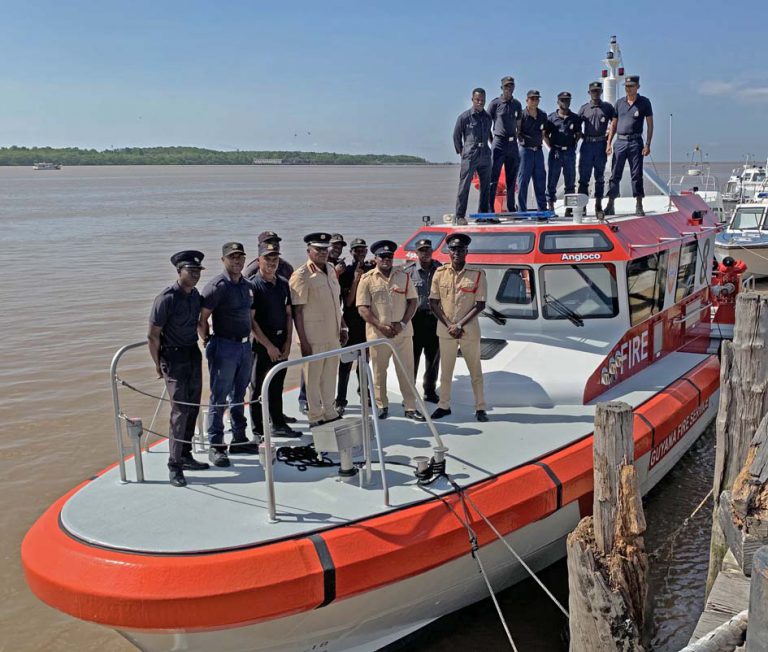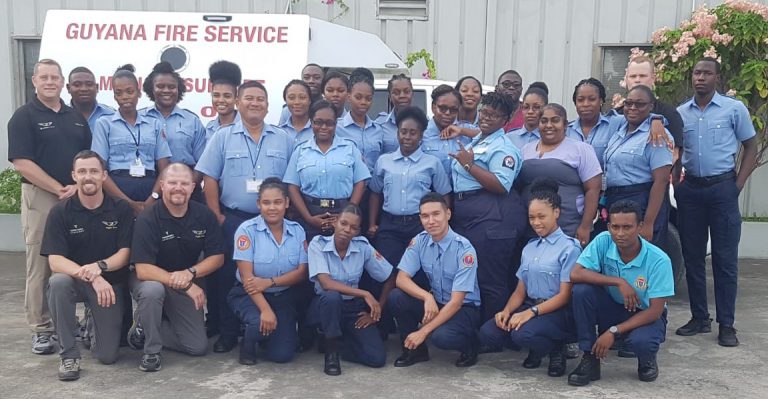Our History

18th century
In the year’s preceding 1871, the city of Georgetown was plagued with several great fires. Whenever these fires occurred, they were destined to have disastrous consequences, since there was no organized effort to combat them.
In April of 1864, fire ravaged Water Street, from South Street to Church Street. In July of the said year, Water Street was again destroyed from Church Street to Hope Street.
19th century
In December of 1913 fire struck once more, this time destroying the Cathedral of the Immaculate Conception in Brickdam.
On Friday 23rd February 1945, fire originated at the premises of Bookers Drug Store, which was considered to be the largest pharmaceutical business in the West Indies. That day later came to be known as’ BLACK FRIDAY’ and the fire went down in our history books as ‘THE GREAT FIRE OF 1945’. That fire engulfed a number of commercial and government buildings located in the hub of the business centre of Georgetown. It then became evident that the city that holds the distinction of being the largest wooden city in the world was threatened by destructive fires.


That fire moved with devastating swiftness. The blaze raged unchecked for approximately five (5) hours, taking one life and leaving eighteen (18) buildings in total ruin, with three (3) others severely damaged and several scorched.
Among the buildings destroyed were the Bookers Drug Store, Georgetown Assembly Rooms, Five and Ten Cents Store, office of the Guyana Match Company, Geddes Grant, the head office of the Demerara Electric Company, General Post Office, Sand Bach Parker and Company Head Office and hardware Stores, Brown Betty Dairies, Bookers Garage, Commissaries Office, Agricultural Society Buildings, Fogarty’s Stationary Store and Transvaal Sprit Shop. Guyana Fire Service Training Manual Page 17

The Museum, Royal Agricultural and Commercial Society’s Library and three reference libraries that housed historic books, documents and important information, were destroyed, thus temporarily paralyzing Guyana’s historical memory. Chronicle House was also slightly damaged as a result of the fire.
The Georgetown Fire Brigade under the command of Major Nicole, “Superintendent of the Fire Brigade” responded to the scene where three Water Tenders, three motor driven Trailer Pumps and two motor driven Fire Boats were put into action.
Personnel on the scene were about two hundred and sixty two (262), comprising firemen (policemen), which numbered fifty two (52) and two hundred and ten (210) commissioned officers and other ranks of the British Guiana Police Force.
They were assisted by numerous members of the Volunteer Fire Brigade organized under the Civil Defence Scheme.
After hours of battle, the fire was eventually extinguished by blasting buildings in its path with dynamite, thus starving the fire of fuel.


Immediately after the great fire, Mr. S.L Van Battenberg Stafford, King’s Counsel was appointed by the government to conduct an enquiry into the causes and circumstances of the “Black Friday Fire’’. This enquiry was held in the open court at the Town Hall. Among some of the matters coming out of this enquiry were:-
- Water supply
- The method of operations of the Fire Brigade.
- Firefighting appliances available, among others.
In July of 1947, Sir Fredrick Seaford was appointed to chair an Advisory and Fire Prevention Board which was mandated to address and make recommendations on all matters affecting Fire Prevention in the city of Georgetown and its suburbs.
It was the recommendation of this board that the Fire Brigade be reconstituted into a separate entity from the police force, since, apart from being overburdened with the added responsibility of firefighting; police officers were not trained to handle the technical job of firefighting.
That recommendation was accepted by the government of the day. Having recognized the necessity to include an experienced officer at the helm of such an organization, the service of a British Officer – Joseph Thomas Atkinson – was secured on September 14th 1947, to head the Georgetown Fire Brigade. Guyana Fire Service Training Manual Page 18.

He became the first qualified Fire Officer to serve in the British Guiana Fire Brigade.
On January 3rd 1950, twenty five (25) policemen were recruited into the Brigade. After being trained in the essentials of firefighting, they formed the nucleus of the then Georgetown Fire Brigade.
Under his command the Brigade continued to expand its service. By the end of 1950, the Brigade’s strength increased to one hundred and eleven (111) comprising of:-
- 1 Superintendent
- 1 Sub Inspector
- 1 Sergeant
- 10 Corporals
- 68 Firemen
- 1 Chief Engineer and
- 29 Mechanic and Quartermasters.
On 26th July 1954, the legislators passed the first reading of the bill which sought to create the services in the colony as one organization to be known as the British Guiana Fire Brigade, separate and distinct from the British Guiana Police Force. On the 12th of October 1957, the British Guiana Fire Brigade was formed under the Fire Brigade Ordinance #7 of 1957 and the designations of ranks were changed to conform to the ranking system of the United Kingdom.
The year 1957 also saw the Fire Brigade expanding its coverage with three Fire Stations in Georgetown, one in New Amsterdam and one Fire Boat Station in Georgetown. A fleet of Fire Boats, Fire Tenders and other vehicles complemented the Fire Brigade’s fire fighting force.
In May of 1966, after Guyana gained its independence, the British Guiana Fire Brigade became known as the Guyana Fire Service. On October 31st 1967, the Guyana Fire Service expanded its service to include an Ambulance Service. The Atkinson Field (Airport) Fire Service was commissioned around the same period. Today it is known as the “Timehri Fire Station”. Guyana Fire Service Training Manual Page 19
On 19th November 1962, the Service saw its first local Chief Fire Officer, in the person of Mr. Lubert Watkins. Since then, the Service has had fourteen (14) other Chief Fire Officers, which includes the present Chief Fire Officer, Mr. Marlon Gentle.
In the ensuing years, the Fire Service continued to develop significantly. On December 13th 1976, a noteworthy achievement was made when the first batch of firewomen was enlisted in the Service.
